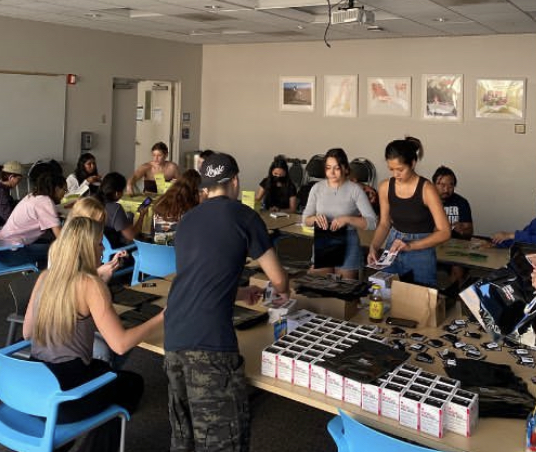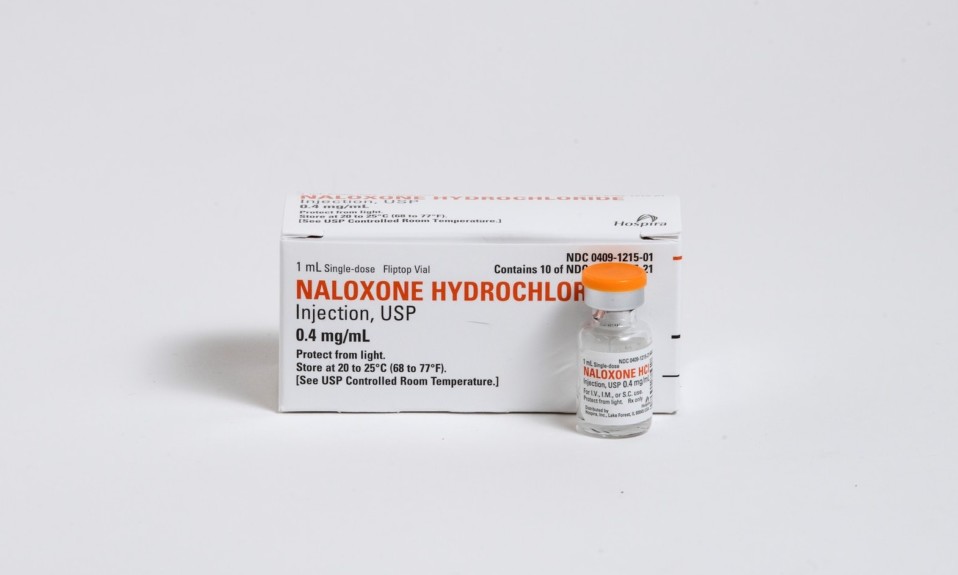End Overdose is providing life-saving tools and training in response to the surge in fentanyl-laced substances on college campuses
By Jennifer Taylor
Last February, a rumor went around UCLA that a particularly bad batch of drugs was circulating on campus. The tip prompted a rapid response from a newly formed student organization—End Overdose at UCLA—whose overarching mission is to save fellow students’ lives.
The ensuing 48 hours were a test of sorts for Gianna Uy, then co-president of the organization, to get out in front of a potential tragedy. And in the span of two days, End Overdose at UCLA—with the support of campus Greek life leadership—went beyond communicating warnings about possible tainted street drugs to training students in 21 fraternities and sororities in how to use fentanyl testing strips and naloxone kits.
“It definitely would not have been able to be done if it weren’t for campus leaders helping us into these spaces and taking the issue seriously,” says Uy, who has since graduated from UCLA and works full-time as the external operations manager for End Overdose’s national headquarters.

Fentanyl is a powerful opioid that increases the risk of overdose. Testing strips, which are becoming more accessible on college campuses in states where they’re legal, can detect whether substances contain fentanyl. A growing number of states—most recently Georgia, New Mexico and Wisconsin—have decriminalized the strips, which traditionally have been seen as running afoul of drug paraphernalia laws. And in April, the Biden Administration announced that federal grant money for drug prevention and harm reduction programs could now be used to purchase fentanyl strips. Naloxone is a medication used to reverse the effects of an opioid overdose.
College campuses aren’t uncommon places for recreational drugs. But the opioid epidemic and the unprecedented prevalence of fentanyl in recreational drugs are changing the landscape. Within a few months of End Overdose’s outreach with UCLA’s Greek life community, the Centers for Disease Control and Prevention (CDC) announced that the U.S. had suffered more than 107,000 overdose deaths in 2021, a 15% increase over 2020. Fentanyl has been a driving force in the huge surge in fatalities, and there have been growing reports of overdoses on campuses and among college students.
“It’s tricky nowadays,” Uy told TreatmentMagazine.com. “You never really know if a drug is laced.”
Widening Outreach
End Overdose decided to make testing strips available to the UCLA population because of the recurrence of stories about drugs on campus being laced with fentanyl. “That was really scary, I think, for a lot of us because it’s something in your community that you can’t necessarily control,” Uy says. End Overdose also supplies fentanyl testing strips and naloxone kits through its website.
A 2019 study found that the use of fentanyl test strips persuaded some participants to alter their drug use behavior, including discarding their drug supply, using with someone else, keeping naloxone nearby and giving strips to friends who might be at high risk for fentanyl exposure. The study concluded that testing strips “may be a useful harm reduction intervention to reduce fentanyl overdose risk among this population.”

UCLA’s student organization was the first harm reduction chapter of its kind created by End Overdose. It has since launched others at UC Riverside, UC Irvine, the University of Alabama and the University of Washington. What’s making a difference, says Uy, is that it is students who are doing the work and the outreach to peers in their community. “It’s essentially community members keeping their community members safe,” she says.
The End Overdose chapter at UCLA does not encourage drug use but seeks to make sure no one dies when they don’t have to, Uy says. In addition to educating and training fraternity and sorority members, the organization works with other interested groups on campus, including social clubs and health clubs. In Uy’s new role at the national level, she engages with collegiate student government organizations, which she says have been receptive to the idea.
“Regardless of whether or not we want drug use to happen, it will happen. Being able to take steps to prevent deaths is our goal.”
—Gianna Uy, End Overdose
“They want to have preventative measures on campus similar to sex education,” Uy says, “especially because it is such a huge problem right now in L.A. and in colleges in general.”
So far, the UCLA chapter has distributed more than 10,000 test strips and has trained 1,200 students to recognize and respond to an overdose. Using these tools, Uy says, really does change the behaviors of people who are faced with deciding to use a substance, whether it comes up positive or negative.
“These drugs do show up. They are very prevalent on campus and with students,” she says. “Regardless of whether or not we want drug use to happen, it will happen. Being able to take steps to prevent deaths is our goal.”
Top photo: Tommao Wang; inset courtesy End Overdose at UCLA














